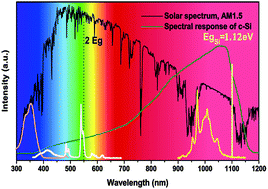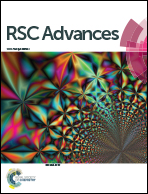Enhanced near-infrared emission by co-doping Ce3+ in Ba2Y(BO3)2Cl:Tb3+, Yb3+ phosphor
Abstract
Ce3+–Tb3+–Yb3+ tri-doped Ba2Y(BO3)2Cl phosphors with intense near-infrared (NIR) emission and broad band absorption in the near ultraviolet region were synthesized by a convenient solid-state reaction in a reducing atmosphere, and the structure and the phase purity of all samples were characterized using X-ray diffraction (XRD). The visible and NIR emission spectra together with corresponding decay curves have also been measured to investigate the energy transfer (ET) processes and analysis ET mechanisms and efficiencies in Ce3+–Tb3+–Yb3+ tri-doped system. In addition, steady and dynamic luminescent properties of Tb3+/Ce3+–Yb3+ co-doped Ba2Y(BO3)2Cl phosphors were also measured as a comparison. As an excellent sensitizer, Ce3+ ion could significantly enlarge the absorption cross-section and greatly enhance the NIR emission intensity of Yb3+ ion. It is believed that Ce3+–Tb3+–Yb3+ tri-doped Ba2Y(BO3)2Cl phosphor is a promising down-conversion (DC) solar spectral convertor to enhance the efficiency of the silicon solar cells.


 Please wait while we load your content...
Please wait while we load your content...